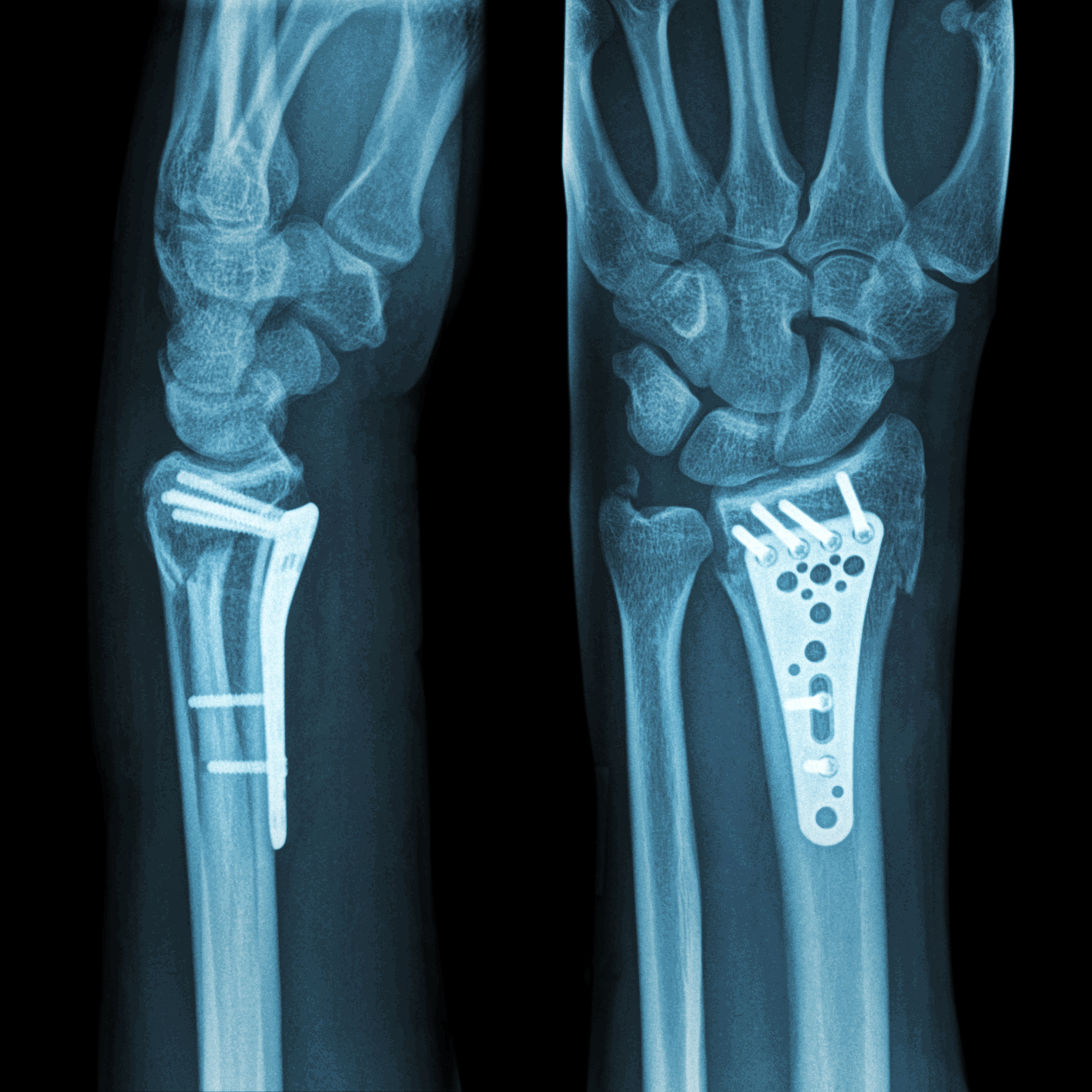
Surgical options for treating a distal radius fracture
Distal radius fractures are among the most common fractures that can affect the hand and wrist. In some cases, non-operative treatments such as arm casting can be prescribed. However, in other cases the best course of action for the patient is for the fracture to be treated with surgery. This post details the surgical options available for treating those with distal radius fractures.
What can cause a fracture in the distal radius?
The most common cause of a distal radius fracture is a fall, as excessive force is placed on the wrist bones at the point of impact. It’s also possible for a fracture to occur in this area due to a sports injury or vehicle collision. The nature of the event that has caused the fracture will determine how complex it is, and at what angle the break occurs.
Surgical treatments for distal radius fractures
Owing to the skill and technology used by modern healthcare professionals, there are a number of different surgical treatments for distal radius fractures. As each can carry different contraindications and potential risks, it’s important that surgeons select the right treatment option for the patient.
Volar plating
Inserting a purpose-built orthopaedic plate with open reduction and internal fixation (ORIF) is a popular method for fracture treatment. The GEMINUS Distal Radius Volar Plate from Skeletal Dynamics has a contoured design that adheres to a range of patient anatomy. This allows the implant to achieve effective fracture reduction with minimal risk of complications with surrounding soft tissues.
For highly comminuted fractures at the distal radius, surgeons can use the COBRA Distal Radius Hemiarthroplasty prosthesis. This radial implant is intended to restore stability at the fracture site.
Dorsal plating
Surgery to implant dorsal plating follows a largely similar approach to that used for volar plating. However, this treatment is frequently used to treat complex fractures with fragment specific plates. Devices such as that included in the PROTEAN system, follows a modular design to achieve fixation of each individual bone fragment.
External fixation
This procedure involves placing pins into the bone that then extend beyond the surface of the skin. An external frame is then used to stabilise the bone and limit movement for healing. Variations of external fixation can be implemented depending on the patient’s situation. For instance, the frame fixator can extend across the wrist to keep it completely static, or it can feature a hinge to allow basic joint motion.
Orthopaedic solutions for radius fractures
LEDA Orthopaedics is a leading UK distributor supporting surgeons in providing treatment options for fractures of all kinds. We recognise that fractures are among the most common injuries that can be sustained people of all ages, especially in the upper and lower extremities. That’s why we’re partnered with leading orthopaedic suppliers from around the world. Contact us today and we’ll be happy to discuss how the needs of your facility can be met.